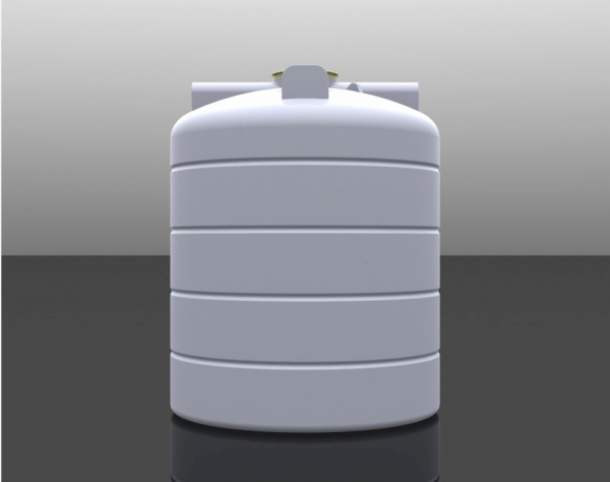 Vertical vs. Horizontal Water Tanks: Which One Is Right for Your Property?
Vertical vs. Horizontal Water Tanks: Which One Is Right for Your Property?
Choosing the right water tank for your property is more than a practical decision; it’s an investment that can impact your storage capacity, water management, and long-term costs. While both vertical and horizontal water tanks have their advantages, the right choice comes down to your specific requirements. In this blog, we’ll explore the differences between these two types of water tanks to help you make an informed decision.
Understanding Water Tank Types
Better you visit Alpha Teknik website then you understand about GRP tank, Plastic Tank, IBC tank and other related products.
What Is a Vertical Water Tank?
A vertical water tank, as the name suggests, is designed with height as its primary dimension. These tanks are cylindrical, standing upright, and are most commonly used in residential and agricultural applications. They’re ideal for properties with limited ground space but ample vertical clearance.
Key Features of Vertical Tanks:
- Taller and narrower shape
- Available in large capacities
- Excellent for maximizing storage in tight spaces
What Is a Horizontal Water Tank?
Horizontal water tanks lie flat on the ground and have a broader base compared to their vertical counterparts. They are often used for transportation purposes or in properties where height restrictions make vertical tanks impractical.
Key Features of Horizontal Tanks:
- Often installed in vehicles or on-grade-level surfaces
- Designed for easier transport and mobility
Space Considerations
Before deciding on a tank, it’s crucial to evaluate your available space.
Vertical Tanks for Small Footprints
Vertical tanks are ideal when space is limited. For instance, properties in urban areas or with narrow plots benefit from their compact footprint. A vertical tank can store large volumes of water without requiring extensive ground area, making it perfect for backyards or tight spaces.
Example:
If you’re looking to install a rainwater harvesting system at home but only have a small backyard, a vertical tank’s tall design will maximize storage while conserving yard space.
Horizontal Tanks for Low-Clearance Areas
Horizontal tanks, however, are the better choice if you have width to spare but limited headroom. These tanks can fit under decks, crawl spaces, or low-clearance areas where vertical tanks wouldn’t fit.
Example:
For properties with barns or sheds with height limitations, a horizontal tank can slide easily into place while still offering ample storage.
Installation and Maintenance
Ease of installation and upkeep are vital factors when choosing a water tank.
Installation Process
Vertical Tanks:
- Require stable, level ground to prevent tipping.
- Typically easier to install since assembly is minimal.
- If it’s a large-capacity vertical tank, you may need extra support to stabilize it during strong winds.
Horizontal Tanks:
- Require straps or additional support to ensure they don’t roll or shift, especially when used in vehicles or sloped areas.
- Installation often involves added groundwork (such as creating firm bedding).
Maintenance
Maintenance needs for both tank types are relatively straightforward but vary slightly:
- Vertical Tanks typically accumulate sediment at the base due to gravity, so routine cleaning is crucial.
- Horizontal Tanks might need more frequent inspections for straps or supports, especially if they’re being used for transport.
Cost Analysis
Water tanks are a long-term investment, and understanding their costs is essential.
Initial Costs
- Vertical Tanks tend to be more affordable due to their simpler design and ease of manufacturing. They deliver high capacity without taking up a lot of material and space.
- Horizontal Tanks are typically more expensive because their design must accommodate reinforcement to prevent rolling, especially in portable applications.
Long-Term Savings
- With a vertical tank, you benefit from reduced space usage, potentially saving costs on property modifications.
- Horizontal tanks might save you money if mobility is a key need—for example, transporting water between locations.
Pro Tip:
While vertical tanks might seem cheaper initially, choosing a tank that doesn’t fit your property’s spatial or functional requirements could lead to additional expenses down the line in installations or upgrades.
Which One Should You Choose?
When deciding between vertical and horizontal water tanks, consider:
- Space – How much ground or height do you have to dedicate to the tank?
- Purpose – Will the tank be stationary or used for transport?
- Budget – Consider both upfront costs and long-term savings.
- Landscape – Ensure the tank’s design aligns with your property’s layout.
For most residential applications, a vertical tank is more practical and economical due to its ability to maximize storage with minimal space. On the other hand, if mobility or specific space constraints are a factor, a horizontal tank might be your go-to solution.
Take the Next Step in Choosing Your Water Tank
The decision between vertical and horizontal water tank depends on your unique property layout and specific needs. By carefully evaluating space, purpose, and budget, you can ensure you’re making the best choice.
No matter which type you decide on, make sure to choose a high-quality tank from a reliable manufacturer to ensure durability and performance. If you’re still unsure about which water tank is the best fit for your property, consulting with a professional can provide clarity and guidance.
Category: Trending gossip
